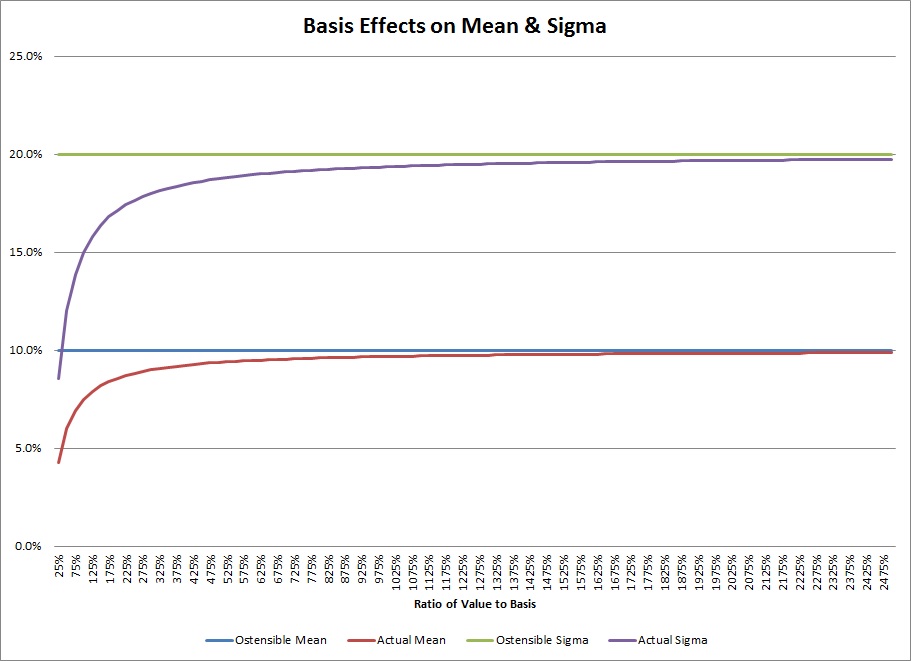In my last post (here) I discussed risk vs. uncertainty. In this post I will discuss three types of risk.
- Goal Risk – you run out of money in retirement.
- Absolute Risk – your portfolio fluctuates with the market.
- Tracking Risk – your portfolio underperforms your neighbor’s portfolio.
To minimize Goal Risk, you have to take more of Absolute Risk or Tracking Risk (unless you have more money than you have goals; a 90-year old with $10 million, no legacy desires, and a spending need of just $100,000 a year has no goal risk – the funds would last 100 years at no interest).
One of the issues with reducing Goal Risk by increasing Absolute Risk or Tracking Risk is the salience of Absolute Risk and Tracking Risk is higher. In other words, because they are high frequency and short term, they feel more threatening. Goal Risk, being longer term, seems like it isn’t as big a worry.
An example may help. Let’s assume there are just four investments available, all of which have their good and bad times on different occasions (in technical terms none of them are perfectly correlated with any of the others):
- U.S. Large Stocks
- Int’l Large Stocks – same expected returns and volatility as U.S. Large
- U.S. Small Stocks – higher expected returns and volatility than the Large stocks
- Bonds – lower expected returns and volatility than all of the others
Suppose your friends, neighbors, etc. all invest 60% in U.S. Large and 40% in Bonds. Further assume that you are not likely to reach your financial goals with that 60/40 mix (perhaps because of high goals or low previous savings) so you invest in 80% U.S. Large and 20% Bonds. That move increases Absolute Risk but is expected to help with Goal Risk (if it always helped it wouldn’t be called risk).
Suppose you went a step further and the 80% stocks was invested 60% U.S. Large and 20% Int’l Large. Now you have also introduced Tracking Risk since returns will be out of sync (sometimes positively and sometimes negatively) with your neighbors, but because the returns happen at different times, you have actually reduced Absolute Risk somewhat.
Suppose you went yet another step and the 80% stocks was allocated 40% U.S. Large, 20% U.S. Small, and 20% Int’l Large. Since U.S. Small has higher risk and higher expected returns and will experience those at different times, it helps with Goal Risk but hurts both Absolute Risk and Tracking Risk.
So, what’s important to you as an investor? There is no one right answer for everyone, but in our experience clients are psychologically more able to take Goal Risk over Absolute Risk (because it is less salient) and Absolute Risk over Tracking Risk (because when you experience poor returns everyone else will too).
As we see it, our responsibility is to focus more on the long run (the goal) and encourage taking prudent levels of Absolute Risk and Tracking Risk. That inevitably means sometimes the portfolio will be volatile (Absolute Risk) and sometimes it will be out of sync (Tracking Risk). This short-term discomfort is expected to pay off in the long run in a pleasant retirement (or whatever the specific goals are).
